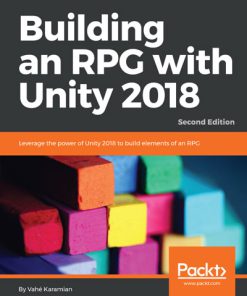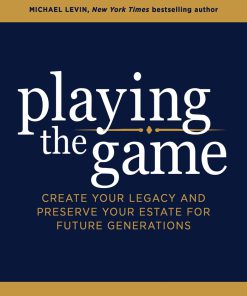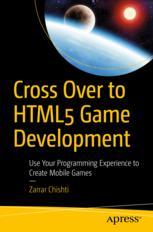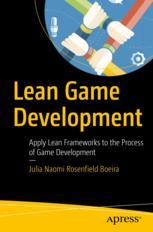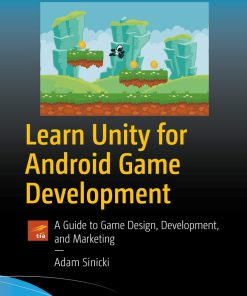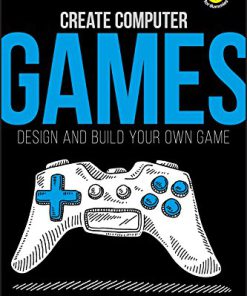Mastering LibGDX Game Development Leverage the power of LibGDX to create a fully functional customizable RPG game for your own commercial title 1st Edition by Patrick Hoey ISBN 1785289365 978-1785289361
$50.00 Original price was: $50.00.$25.00Current price is: $25.00.
Mastering LibGDX Game Development Leverage the power of LibGDX to create a fully functional customizable RPG game for your own commercial title 1st Edition by Patrick Hoey – Ebook PDF Instant Download/Delivery: 1785289365, 978-1785289361
Full download Mastering LibGDX Game Development Leverage the power of LibGDX to create a fully functional customizable RPG game for your own commercial title 1st Edition after payment
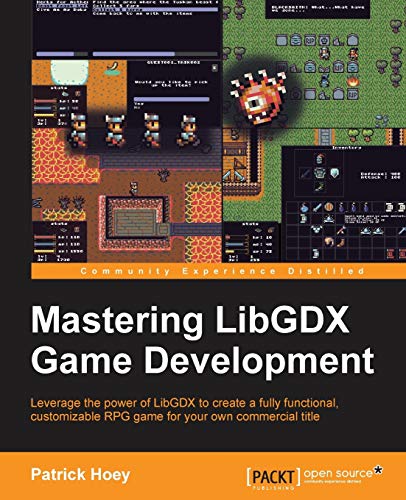
Product details:
ISBN 10: 1785289365
ISBN 13: 978-1785289361
Author: Patrick Hoey
- Learn game architecture and design patterns with concrete examples using proper software engineering principles
- Save time and money with this handy reference guide for future game development with LibGDX
- Design and develop a fully functional RPG video game from scratch with a hands on, step-by-step approach using LibGDX
LibGDX is a Java-based framework developed with a heavy emphasis on performance, and includes cross-platform support out of the box (Windows, OS X, Linux, iOS, Android, and HTML5) as well as providing all the low-level functionality so that you can focus on developing your game and not battling with the platform. LibGDX also has an engaged and responsive community, active maintenance, and is available for free without a prohibitive license.
Starting from the beginning, this book will take you through the entire development process of creating an RPG video game using LibGDX.
First, this book will introduce you to the features specific to RPG games, as well as an overview of game architecture. Then, you will create map locations, develop character movement, add animation, integrate collision detection, and develop a portal system. Next, you will learn and develop a HUD and other UI components, as well as an inventory management system. You will then develop NPC interactions including dialog trees, shopkeepers, and quest givers. After this, you will design and create battle features for fighting enemies, as well as event triggers for world events. Finally, you will add the final polish with sound, music, and lighting effects.
By the end of this book, you will have learned and applied core components from the LibGDX framework, as well as have a finished game to use as a springboard for customization and story development for your own commercial video game.
Table of contents:
1. As the Prophecy Foretold, a Hero is Born
1.1. Understanding the fundamentals of role-playing games
1.2. History
1.3. RPG features
1.4. Technologies used when developing a role-playing game
1.5. Commercial game versus technology demo
1.6. Target platforms
1.7. Game framework versus game engine
1.8. Budget
1.9. Understanding the basics of a game architecture
1.10. The high-level game loop of Adventure
1.11. The high-level event-based loop
1.12. The high-level game loop for a graphic-based video game
1.13. Understanding the high-level component layout of LibGDX
1.14. LibGDX backend modules
1.15. LibGDX core modules
1.16. Understanding the application lifecycle of LibGDX
1.17. Setting up your development environment
1.18. Prerequisite tool installation
1.19. Running the LibGDX setup tool
1.20. Understanding the build environment and project structure
1.21. Why Gradle?
1.22. Benefits of Gradle
1.23. Project structure
1.24. Version control systems
1.25. Running the default demo project
1.26. See also
1.27. Summary
2. Welcome to the Land of BludBourne
2.1. Creating and editing tile-based maps
2.2. Implementing the starter classes for BludBourne
2.3. DesktopLauncher
2.4. BludBourne
2.5. Implementing asset management with loading textures and tile-based maps
2.6. Utility
2.7. Implementing the camera and displaying a map in the render loop
2.8. MainGameScreen
2.9. Implementing map management with spawn points and a portal system
2.10. MapManager
2.11. Implementing your player character with animation
2.12. Entity
2.13. Implementing input handling for player character movement
2.14. PlayerController
2.15. Summary
3. It’s Pretty Lonely in BludBourne…
3.1. The Entity Component System design pattern
3.2. Using JSON scripts for NPC properties
3.3. Entity
3.4. Component interface
3.5. PhysicsComponent
3.6. GraphicsComponent
3.7. InputComponent
3.8. Entity selection
3.9. Map design
3.10. Summary
4. Where Do I Put My Stuff?
4.1. Inventory and HUD layouts with skins
4.2. PlayerHUD with Scene2D
4.3. Developing UIs with LibGDX
4.4. Widget styles
4.5. Texture atlas
4.6. 9-patch
4.7. Skins
4.8. Developing UI summary
4.9. StatusUI
4.10. Drag and drop
4.11. InventorySlot
4.12. InventoryItem
4.13. InventorySlotSource
4.14. InventorySlotTarget
4.15. InventoryUI
4.16. Drag and drop usage
4.17. Tooltip usage
4.18. Menu screens
4.19. Save and load game profiles
4.20. Observer pattern
4.21. Observer pattern usage example
4.22. Summary
5. Time to Breathe Some Life into This Town
5.1. Speech windows with dialog trees
5.2. Theory behind conversation trees
5.3. An overview of class hierarchy
5.4. Conversation
5.5. ConversationChoice
5.6. ConversationGraphSubject and ConversationGraphObserver
5.7. ConversationGraph
5.8. UI structure
5.9. Script support for conversations
5.10. Triggering events
5.11. Shop store UI with items and money transactions
5.12. Summary
6. So Many Quests, So Little Time…
6.1. The theory of dependency graphs
6.2. The dependency graph implementation
6.3. QuestTask
6.4. QuestTaskDependency
6.5. QuestGraph
6.6. QuestUI
6.7. The steps involved in creating a quest
6.8. Summary
7. Time to Show These Monsters Who’s the Boss
7.1. The battle system implementation
7.2. BattleState
7.3. BattleSubject
7.4. BattleObserver
7.5. InventorySubject
7.6. Consuming items
7.7. MonsterFactory
7.8. Monster entity
7.9. MonsterZone
7.10. BattleUI
7.11. AnimatedImage
7.12. LevelTable
7.13. GameOverScreen
7.14. Summary
8. Oh, No! Looks Like Drama!
8.1. Class diagram overview
8.2. Sound and music
8.3. AudioObserver
8.4. AudioSubject
8.5. AudioManager
8.6. Creating cutscenes
8.7. Action
8.8. CutSceneScreen
8.9. Summary
9. Time to Set the Mood
9.1. Screen transitions
9.2. The ScreenTransitionActor class
9.3. The ScreenTransitionAction class
9.4. The PlayerHUD class
9.5. The MainGameScreen class
9.6. Camera shake
9.7. Static lighting
9.8. Lightmap creation
9.9. The Map class
9.10. The MapManager class
9.11. The MainGameScreen class
9.12. Day-to-night cycle
9.13. The ClockActor class
9.14. The MapManager class
9.15. Particle effects
9.16. Particle Editor
9.17. The ParticleEffectFactory class
9.18. The BattleUI class
9.19. Summary
10. Prophecy Fulfilled, Our Hero Awaits the Next Adventure
10.1. Digital distribution platforms
10.2. Obfuscating the save game profiles
10.3. Logging levels
10.4. Creating an executable JAR
10.5. Gradle
10.6. IntelliJ IDEA
10.7. Native launchers
10.8. Packr
10.9. Obfuscating the packaged JAR
10.10. The proguard.cfg file
10.11. Debugging tips
10.12. The command line
10.13. Attach to the running process
10.14. Testing builds before release
10.15. A smoke test
10.16. BludBourne start and main menu
10.17. Cutscene
10.18. New game
10.19. Inventory
10.20. Town NPCs
10.21. Conversation
10.22. Quest
10.23. Item purchase
10.24. Battle
10.25. Game over
10.26. Consuming items
10.27. Wand attack
10.28. Lightmaps and day-to-night cycle
10.29. Save game profiles
10.30. The burn-in test
People also search for:
libgdx game example
libgdx game dev
mastering libgdx game development github
libgdx tutorial rpg
mastering libgdx game development source code
Tags: Patrick Hoey, Mastering LibGDX, Game Development, Customizable, Commercial Title
You may also like…
Computers - Programming
Business & Economics
Computers - Programming
Computers - Programming
Computers - Programming
Children's Books - Computers & Technology
Create Computer Games Design and Build Your Own Game Patrick Mccabe
Computers - Programming




